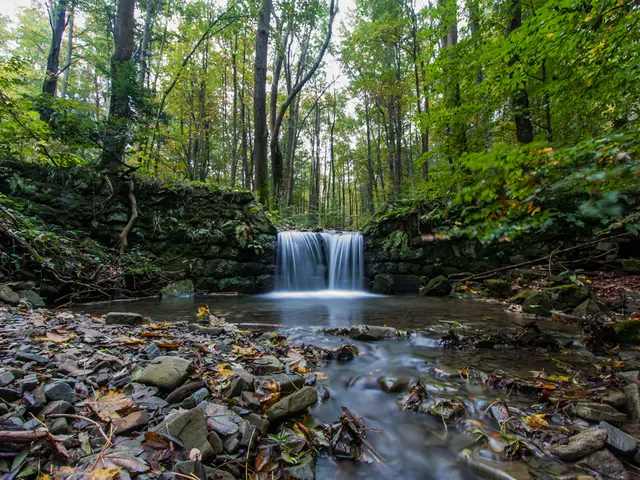Guidelines for Cultivating Berberis: A Comprehensive Guide
In the world of gardening, Berberis shrubs are a popular choice for their vibrant colours and hardy nature. These shrubs, which can spread via bird droppings and sometimes become invasive in certain locations, offer a wide variety of cultivars to suit different tastes and garden environments.
When it comes to maintaining Berberis shrubs, the approach varies depending on the specific variety. For formal hedges, pruning twice a year is recommended, but it's essential to avoid pruning after flowering to prevent the shrubs from producing berries. Deciduous Berberis, on the other hand, can be pruned in winter by cutting alternate stems down to the base or by coppicing right down completely. Evergreen or semi-evergreen varieties, when planted singly, only need light pruning once a year to maintain their shape.
Propagation of Berberis is typically done through semi-ripe cuttings, taken in late summer or early autumn. This method ensures a healthy and robust growth of the new shrubs.
One common challenge faced by Berberis growers is the Berberis sawfly, small caterpillars that can quickly strip a plant of its leaves, causing significant damage, especially to hedges. Organic and non-organic sprays are available to combat infestations, but they tend to be more effective on young larvae.
The German-speaking region, along with nurseries and horticultural institutions across Europe and North America, is home to many well-known Berberis varieties. These include Berberis x lologensis 'Apricot Queen', a lovely spring-flowering shrub with apricot orange flowers, which has been awarded the prestigious Award of Garden Merit (AGM).
Other popular cultivars include Berberis thunbergii 'Cheal's Scarlet', a deciduous shrub with lovely red berries, and Berberis thunbergii 'Bonanza Gold', a golden-leafed variety that brightens up a dark corner with red berries in the autumn. Berberis thunbergii f. atropurpurea is another favourite, offering year-round interest with pale-yellow flowers in mid-spring and dark red-purple leaves that turn a brilliant shade of red in autumn.
Lastly, there's Berberis darwinii 'Compacta', a compact cultivar with small red-bronze leaves, rich golden-yellow flowers, and edible blue berries, perfect for growing in a mixed or shrub border and making a good low hedge.
In conclusion, while Berberis shrubs may present some challenges, their vibrant colours, hardy nature, and variety of cultivars make them a worthwhile addition to any garden. With careful pruning and timely control of pests, these shrubs can provide a beautiful and long-lasting display.





